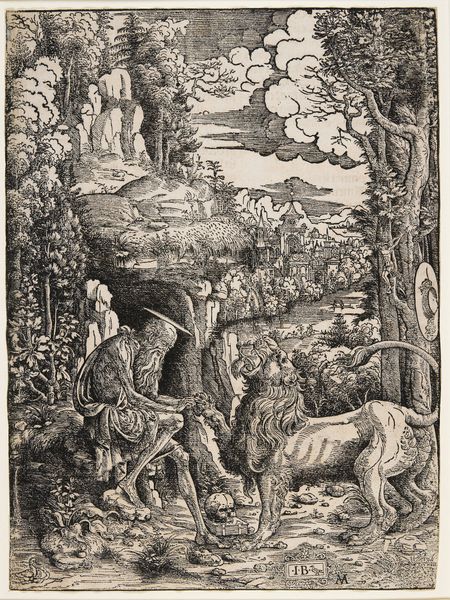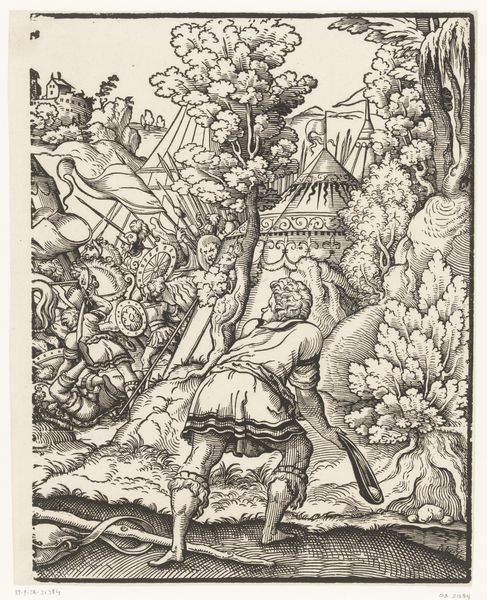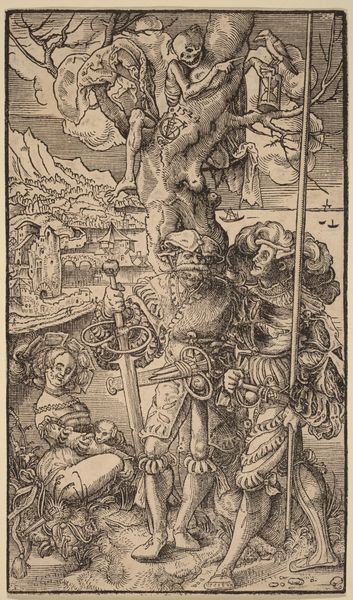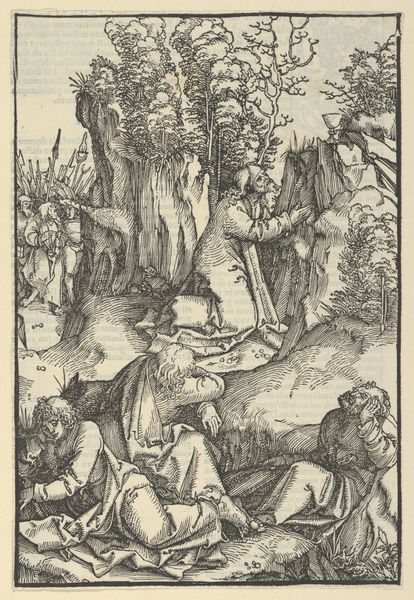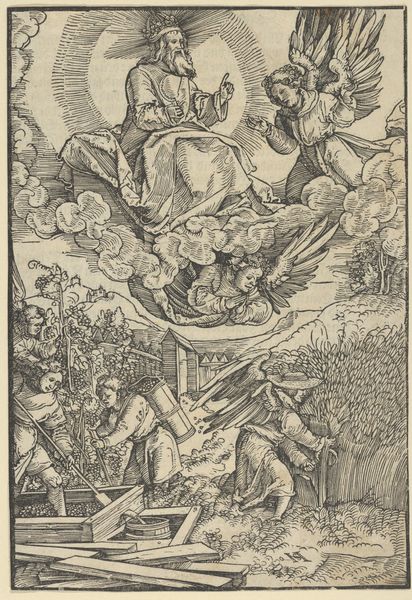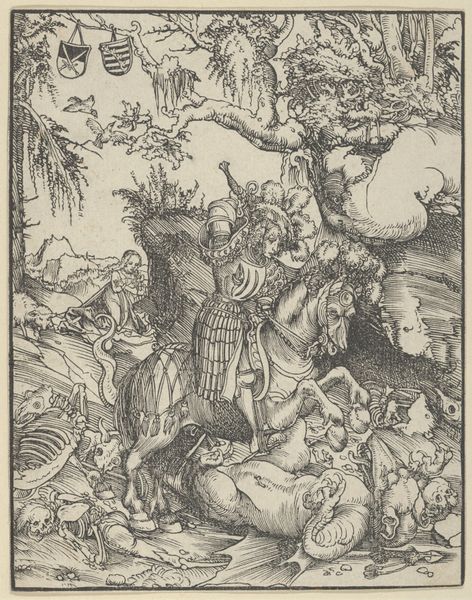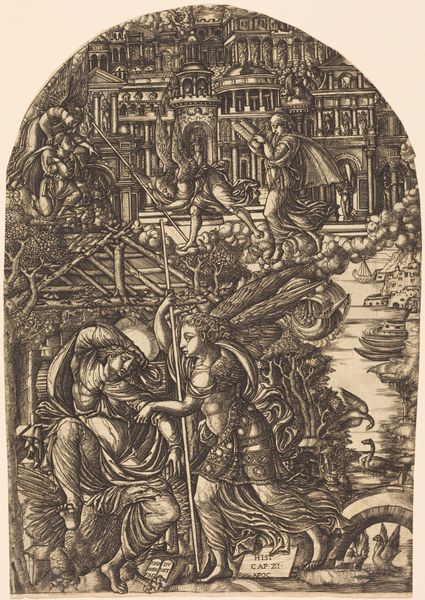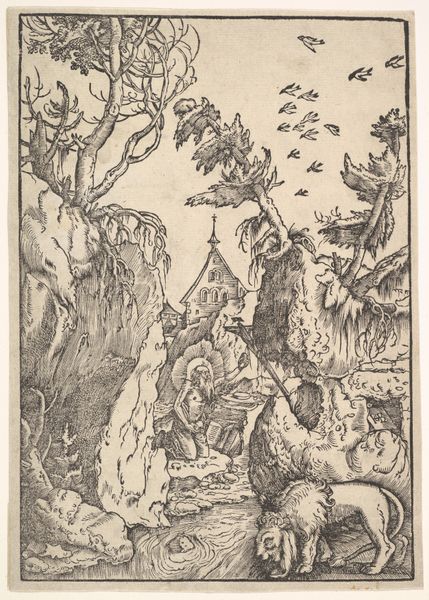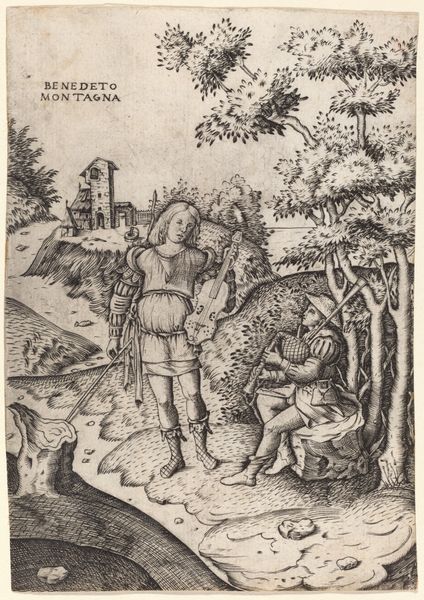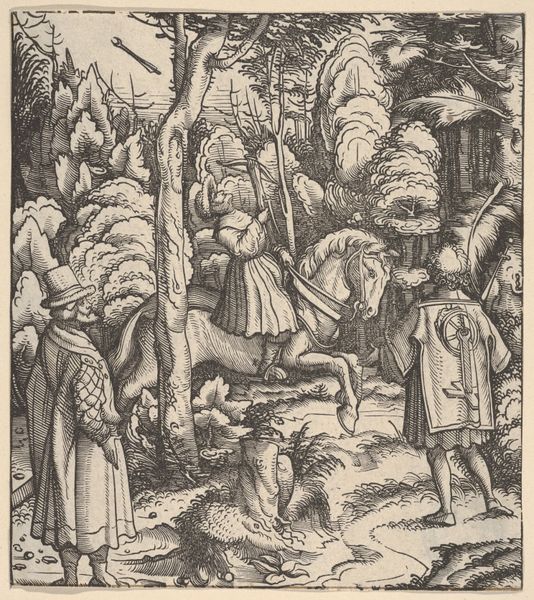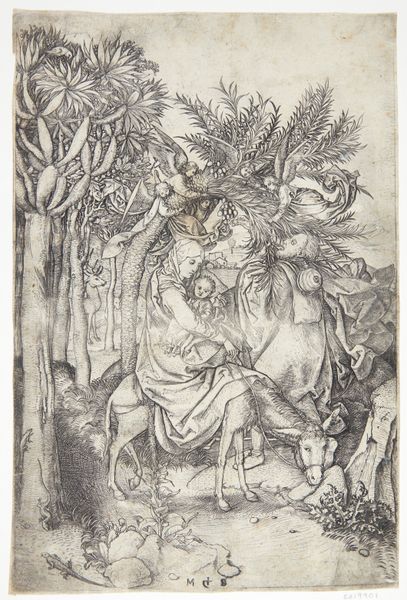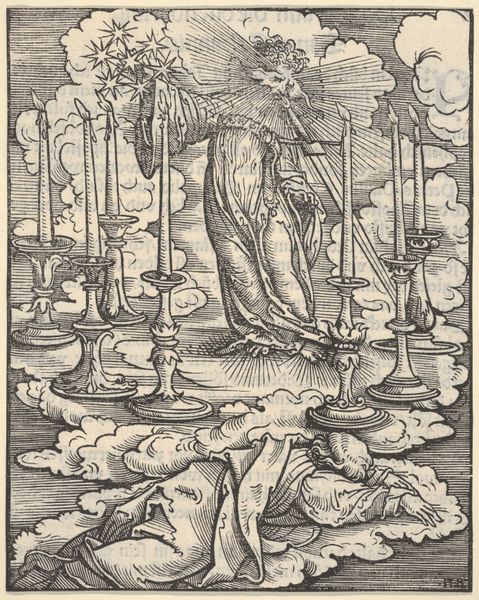
drawing, print, paper, ink
#
drawing
#
ink drawing
#
narrative-art
#
pen drawing
# print
#
figuration
#
paper
#
ink
#
history-painting
#
northern-renaissance
Dimensions: 145 × 95 mm (primary support); 230 × 180 mm (secondary support)
Copyright: Public Domain
Curator: Here we have "St. Matthew," a print made in 1523 by Georg Lemberger, part of the illustrations for The Luther Bible. Editor: My first thought is of intensity! All that tightly packed linework gives it a buzzing energy, almost vibrating on the page. Curator: Absolutely, and this density speaks volumes about the period. The proliferation of printed images in the 16th century was instrumental in shaping public opinion, particularly during the Reformation. Consider how this relatively inexpensive medium enabled widespread dissemination of not just religious texts but also political and social ideologies. Editor: It is intriguing how the traditional symbol of St. Matthew, the angel, floats within its own cloud, subtly distinct from Matthew himself, who is busy writing, diligently inking his quill. Curator: Lemberger’s placement does add a layer of complexity. Instead of divine inspiration passively received, we see active labor, underscoring the importance of individual interpretation of scripture. The printing press aided individual reading of the Bible instead of relying solely on interpretations of religious figures, so you are seeing an illustration of that concept. Editor: The environment feels charged, the natural world itself seemingly reacting to Matthew's act of writing, the gospel message. Look how the artist has used only ink to depict the way sunlight streams down. It's about the intensity of this pivotal, faith-shaping work. Curator: Precisely. And think about the cultural impact – how the Luther Bible visually shaped the narratives for a wide audience during the Reformation, giving people direct access in their own vernacular to religious thought. Lemberger’s work contributed to that massive shift. Editor: Seeing how imagery has been deployed for centuries helps me recognize familiar ideas with new eyes. Every angel, every open book—it builds on millennia of symbolism that still echoes today. Curator: Reflecting on "St. Matthew" I see how art functions as a powerful tool for translating ideas into tangible forms, affecting not only belief systems but also influencing historical events. Editor: And for me, pondering symbols across centuries underscores the importance of understanding our visual vocabulary, so we might be alert to the power and subtlety of their messages.
Comments
No comments
Be the first to comment and join the conversation on the ultimate creative platform.
